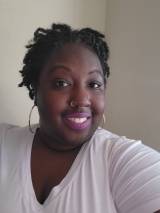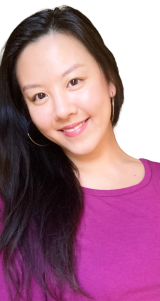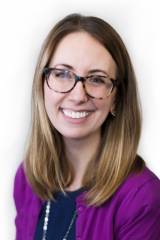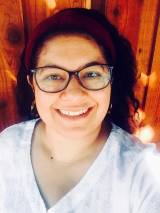Sure, there were days when the WiFi went out, but Bowers took those hurdles one at a time. And sometime last fall, she looked up from teaching to a smoothly operating scene. She saw her second-grader attending Zoom class in the living room right beside her and her sophomore daughter dancing in the backyard for P.E. Meanwhile, her freshman son studied biology in his bedroom and her husband worked from the family room.
“I thought, ‘Is this really happening?’ We talk about kids being resilient all the time. I truly believe they are. But this is the first time where I noticed my own resiliency in the moment. I'm proud of that,” Bowers said.
The pandemic also highlighted to Bowers that her students may not have the same resources that were in her home. She said that as the year progressed and students used up school-provided supplies, some families quickly replaced them while others couldn’t.
Her school worked to fill in the gaps, but seeing those disparities has changed how Bowers thinks about equity in the school building, too. She said it can create stigma and shame when teachers call out students who don’t have supplies ready, or when they put flags on classroom pencils to make sure they stay in the room. Going forward, her assumption will be that every kid needs a pencil or other materials. “And if they don't — great, cool. But I'm going to still provide it for them and just hope that they will not feel embarrassed to take the supplies that are there.”
 Rickey Townsend
Rickey Townsend
7th grade math teacher, Benjamin Franklin International Exploratory Academy
Dallas, Texas
Opening up online
“I am learning that there are platforms to capture the voice of all students, no matter if extroverted or introverted.”
One day in late 2020, as students logged into Rickey Townsend’s hybrid classroom, they encountered the usual digital scene. Their math teacher, wearing a suit and tie with matching glasses, greeted students by name. His own name was displayed in the bottom corner of his picture. But that day, the transparent gray label included a few new words: “He/Him/His.”
Townsend appended those pronouns after seeing a tweet that suggested including them would acknowledge and affirm LGBTQ students. He didn’t point out the change, but his seventh graders noticed. One student sent him a private message saying they’d never seen a teacher do that and asking if it was OK to list their pronouns, too. It was the start of conversations Townsend said probably wouldn’t have happened in another year. And it contributed to a larger trend of his students opening up more in Zoom chat than when within an arms’ length of peers. “This is the first year a lot of students shared about who they are personally, how they identify,” Townsend said. They shared what's going on at home (and about) deaths in the family. I don't think that I would have gotten that in a traditional school setting.”
Townsend found other small but intentional acts to connect with students, too. He used Zoom polls for mental health checks, and he spoke honestly about his own ups and downs. Several times per week, he started class with non-math questions about student interests, and after the Capitol riot in January, he set aside linear equations so students could process national events.
Those kinds of conversations, along with a supportive network, helped Townsend through the harder days. This was his fifth year teaching and the first time he contemplated quitting. He said the Zoom connections weren’t as fulfilling as those in a physical classroom, but they have caused him to reflect on how he engages with quiet students in-person. He might, for example, continue using virtual check-in polls or give student index cards as an alternate way to share. “Pre-coronavirus, I was guilty of encouraging students who were labeled as quiet scholars to speak up in class,” Townsend said. “I am learning that there are platforms to capture the voice of all students, no matter if (they are) extroverted or introverted.”
 Janelle Henderson
Janelle Henderson
Grade 3 teacher, Mill Creek Leadership Academy
Louisville, Kentucky
Hard conversations, healthy habits
“I was in a lighter mood, we had more fun together. And I know my students got more out of our content.”
Last September, when a Kentucky grand jury brought no charges against the police officers who shot and killed Breonna Taylor, Janelle Henderson took a deep breath. Discussing tough topics is nothing new to Henderson’s third grade classroom, but she knew this conversation would be different. For one thing, it came early in the year, with little time to build trust among students. What’s more, the events quite literally hit close to home.
“I don't want to say our city was on fire, but the energy was palpable, like everyone was in a very heightened state of anxiety and stress,” Henderson said. That meant she needed to establish a clear structure and ground rules for discussing the news. Those rules included speaking in “I” statements, not “we” statements, that it’s not OK to hurt people or things, that no one was required to share, and that anyone could turn off their screens at any time.
Henderson raised the topic in small group sessions with students. With each group, she started by sharing that she was “not OK” and affirming any emotions her students felt. Then she stepped back to listen. After everyone got a chance to speak, they moved on to the day’s regular content.
Henderson said that facilitating those conversations terrified her — especially knowing that families of students would be listening and watching — but they were necessary. And September was just the start. Throughout the year, her third graders circled up online to discuss the presidential election, Chadwick Boseman’s death, the Capitol insurrection and more. “We did a lot in this virtual setting that I didn't ever expect to do, but it just worked, and that was the classroom that I had,” Henderson said.
It helped that Henderson herself felt more grounded and present this year. Her school didn’t require as many hours of synchronous virtual instruction as they would have in-person, and Henderson used the first hour of the day to prepare at her own pace. She also took more movement and meditation breaks throughout the day. “So as a human, I just felt really grounded, like I didn't feel like there was this pressure to rush, rush, rush and go, go, go.”
That pace may be hard to maintain with a return to regular schedules, but Henderson said she’ll try to set boundaries, like guarding her planning period for self-care rather than squeezing in a dozen miscellaneous tasks. If she can, she knows it will be good for herself and for her third-graders. Just as it was this year. “I was in a lighter mood, we had more fun together. And I know my students got more out of our content,” she said.
 Jennifer Dao
Jennifer Dao
Algebra teacher, Nichols Middle School
Evanston, Illinois
Tapping into technology
“I used to think I was a pretty tech savvy teacher, but remote learning has taught me to tap more into my tech skills and use them to be more intentional with my students.”
Jennifer Dao’s mathematics teaching style has always been pretty open-ended. There’s a lesson plan and a learning goal, of course, but after presenting a problem, she follows her students’ lead. “Whatever the kids do, I use it throughout the lesson to summarize and to piece together their work,” she explained.
Without students in the same room as her until February, Dao decided to implement a new structure this year. Along with some colleagues, she adopted a practice called learning contracts from Larry Geni, a retired science teacher. Using this model, Dao started each class with a slide containing information and links to everything that would be covered that day. The class spent the first 40 minutes on a warm-up and the main lesson. For the second half of class, students chose a task from three options to work on independently or with small groups.
One task might be watching a review video on a foundational skill or completing guided notes with teacher support. There are also advanced practice exercises for the day’s topic and advanced challenges related to the standard. Dao said these options helped her organize class more clearly, and it showed her that students benefit from visual and written instructions, in addition to the oral ones she gives in-person. “I used to think I was a pretty tech savvy teacher, but remote learning has taught me to tap more into my tech skills and use them to be more intentional with my students,” she said.
Choosing between tasks also improved students’ metacognitive skills by requiring them to take stock of their understanding. Students were “brutally honest” about themselves in weekly self-evaluations and optional blog posts, Dao said. Since she couldn’t see students’ independent work on paper, reading their self-reflections encouraged her. “It made me feel like the work that I put in wasn't for nothing, because a lot of teachers felt that frustration on Zoom, seeing just squares on a page. … It gave me a better snapshot of the kids.”
 Lauren Merkley
Lauren Merkley
English teacher, Cottonwood High School
Murray, Utah
A “both/and” year
“I must have said, ‘I can't do this’ 1,000 times this school year … But every time — every time! — I could do it. I could keep going.”
For Lauren Merkley, the 2020-21 school year started with a sense of foreboding. Her school began with both in-person and asynchronous virtual options. That meant she had to build an online class while also preparing for socially distanced traditional instruction. At the same time, ambient anxiety about possible closures loomed large. The school went fully remote twice in the fall because of surging COVID-19 numbers.
“First quarter was brutal,” Merkley said. In her virtual classes, there were dozens of students she never saw or heard from. “They were ghosts,” she said. And that meant failing more students than ever before. It was all so much. “I must have said, ‘I can't do this’ 1,000 times this school year,” Merkley recalled. “But every morning my heart was beating, and I found that I could do it. Whatever ‘it’ was that day.”
The seeming impossibility of so many tasks forced Merkley, who in 2020 was the Utah Teacher of the Year, to accept imperfection in her teaching. She told students that she was learning alongside them and asked for their feedback. Though uncertainty persisted, things did improve after the first quarter. And like flowers pushing through cracks in concrete, some wonderful moments blossomed, too. Like when her students read Martin Luther King Jr.’s “Letter from Birmingham Jail.” In FlipGrid video responses and comments, the high schoolers drew connections between King’s rhetoric and contemporary questions about police violence and the Black Lives Matter movement. The discussion had the highest engagement of any activity in Merkley’s virtual classes.
While not every lesson sparked that kind of response, Merkley said that the pandemic and the politics of the past year catalyzed students to look beyond their usual rhythm of school or work or soccer practice. They made connections between their lives and larger systems. “It's a both/and,” Merkley said. “It was (a year that we survived). But there were also moments where my kids felt so alive, where they felt so relevant, where what we were doing felt like it mattered.”
 Lucia Bowers
Lucia Bowers


 Rickey Townsend
Rickey Townsend Janelle Henderson
Janelle Henderson Jennifer Dao
Jennifer Dao Lauren Merkley
Lauren Merkley